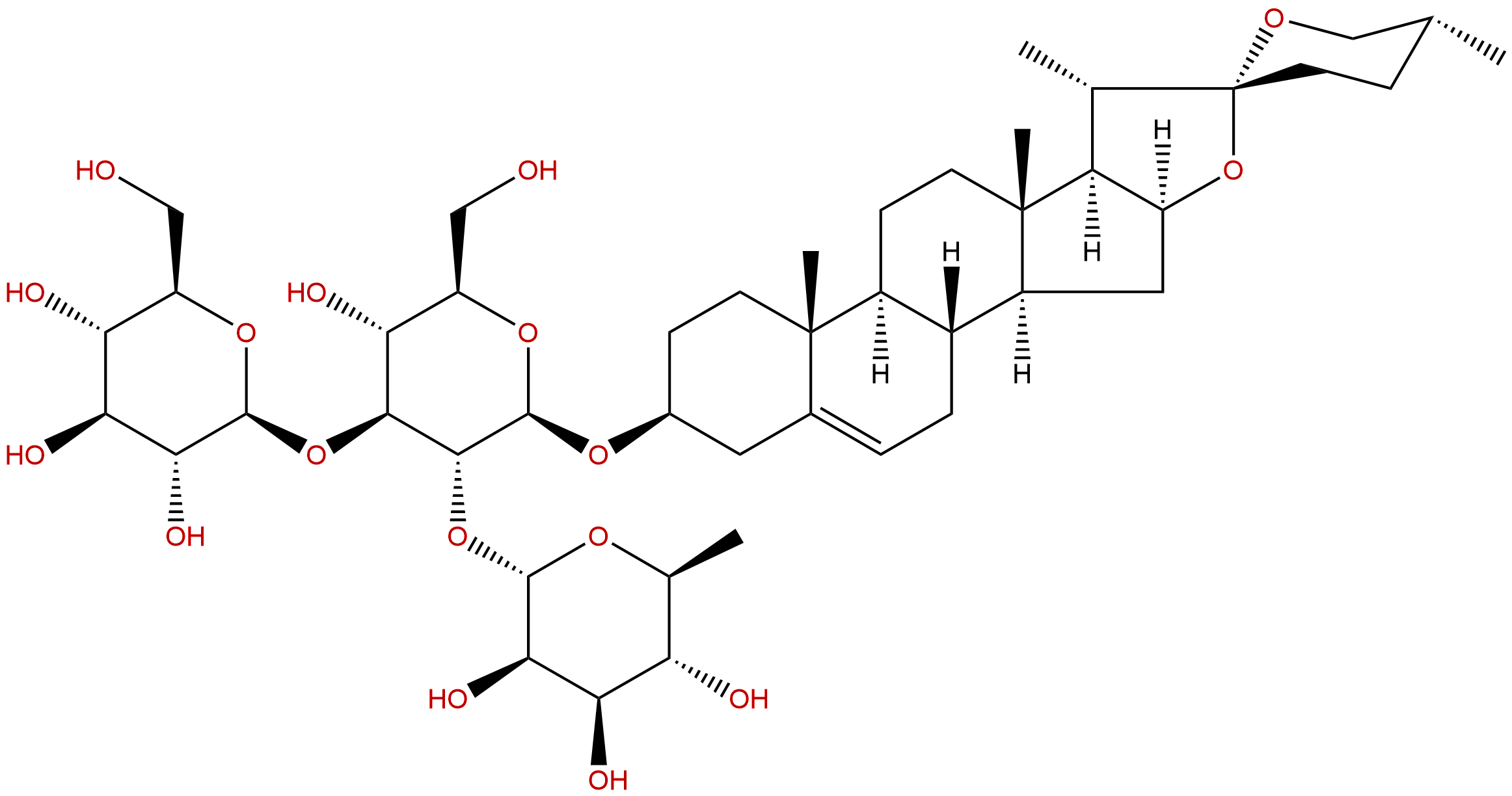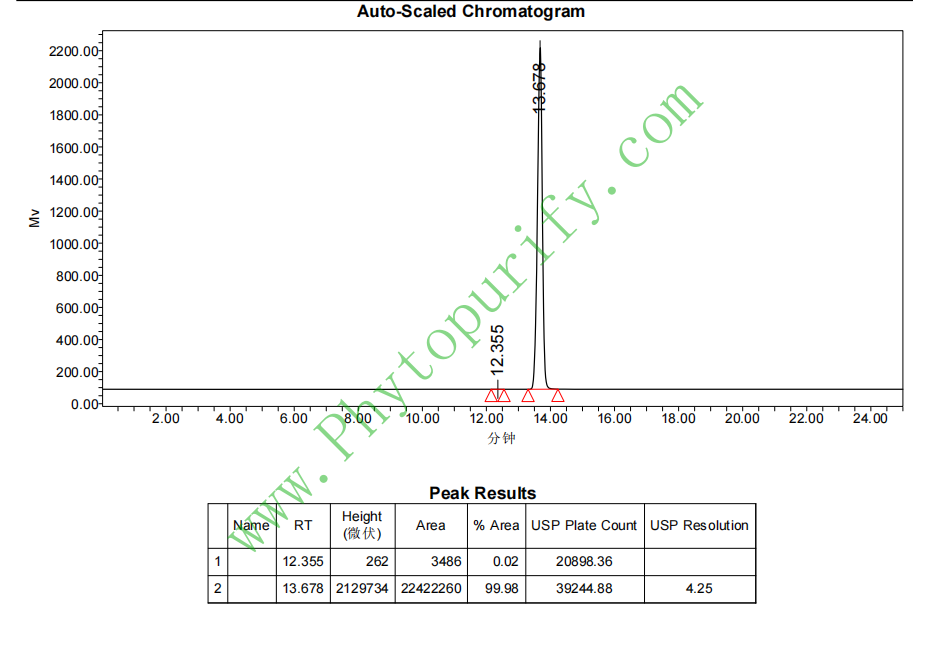
GracillinCAS No.:19083-00-2
|
||||||||||
 |
|
|
||||||||

| Catalogue No.: | BP0688 |
| Formula: | C45H72O17 |
| Mol Weight: | 885.054 |
Synonym name:
Catalogue No.: BP0688
Cas No.: 19083-00-2
Formula: C45H72O17
Mol Weight: 885.054
Botanical Source: Dioscorea gracillima
Purity: 95%~99%
Analysis Method: HPLC-DAD or/and HPLC-ELSD
Identification Method: Mass, NMR
Packing: Brown vial or HDPE plastic bottle
Can be supplied from milligrams to grams.
For Reference Standard and R&D, Not for Human Use Directly.
Inquire for bulk scale.
Description:
Gracillin has anti-tumor activity, can induce cell cycle arrest, oxidative stress, and apoptosis in HL60 cells, and has the potential to be developed as an antitumor agent.
References:
Pharmazie. 2015 Mar;70(3):199-204.
Gracillin induces apoptosis in HL60 human leukemic cell line via oxidative stress and cell cycle arrest of G1.
Gracillin, a kind of steroidal saponin isolated from the root bark of wild yam Dioscorea nipponica has been reported to exert antitumor activity.
METHODS AND RESULTS:
In the present study, we investigated the anticancer activity of Gracillin against HL60 cells, and evaluated the possible mechanism involved in its antineoplastic action. The cell proliferation was evaluated by cell counting Kit-8 (CCK-8) assay, Gracillin inhibited the growth of HL60 cells in a time- and concentration-dependent manner. Flow cytometry was used to analyze the cell cycle distribution whereas Annexin V-FITC/PI flow cytometry analysis was carried out to confirm apoptosis induced by Gracillin, Our results demonstrated that Gracillin could induce cell cycle arrest of G1 and apoptosis in HL60 cells. Furthermore, based on the biochemical methods, induction of oxidative stress by Gracillin was indicated by increased the content of malondialdehyde (MDA), and decreased superoxide dismutase (SOD) activity. In addition, real time-PCR verified the expression of apoptosis-related genes, the mRNA level of Bcl-2 was decreased dramatically, while Bax was remarkably increased by Gracillin.
CONCLUSIONS:
Taken together, Gracillin could induce cell cycle arrest, oxidative stress, and apoptosis in HL60 cells, and has the potential to be developed as an antitumor agent.
HPLC of Gracillin
